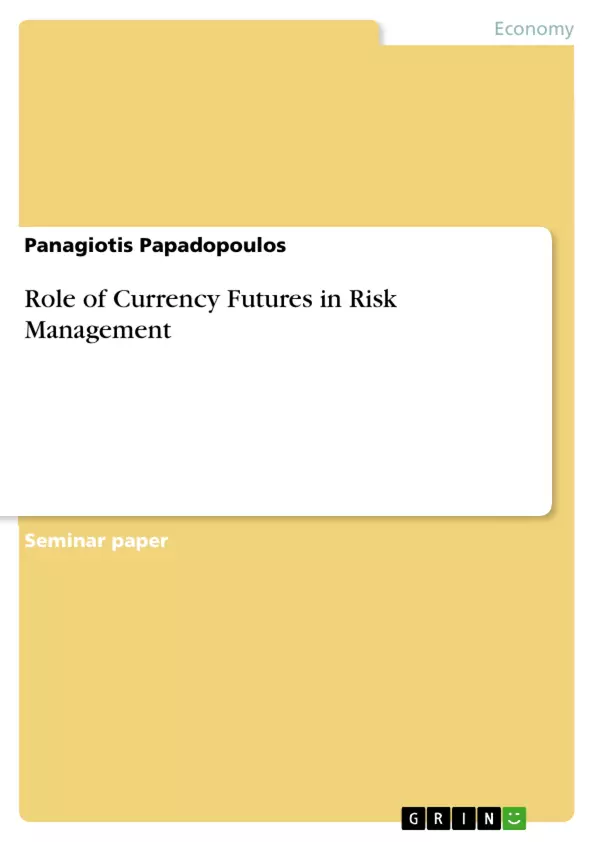This paper examines the role of currency futures contracts in risk management. The reader can find a brief introduction to the history of foreign exchange markets and under which cir-cumstances the markets appeared in 1970s. Furthermore, the question of why to use currency futures to hedge risk exposures is answered. A more in-depth analysis of how currency futures contracts are structured, especially their specifications and their advantages and limi-tations for the user. Moreover this paper addresses issue of how currency futures are used by participants. Finally, a brief use of currency futures is also examined with a case study on the FX-market.
Table of contents
Executive Summary
Table of contents
List of figures
1. Introduction
2. Literature Review
2.1 Why to hedge with Currency Futures?
2.2 Currency Futures Outline and Scope
3. Application
3.1 Hedging with Currency Futures
3.2 Currency Futures: Case Studies
4. Conclusion
References
Appendices
- Quote paper
- Panagiotis Papadopoulos (Author), 2011, Role of Currency Futures in Risk Management, Munich, GRIN Verlag, https://www.grin.com/document/170203



